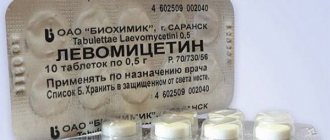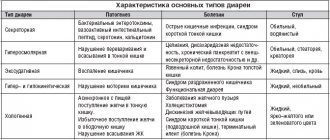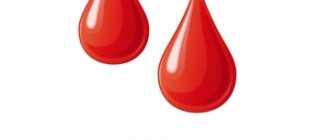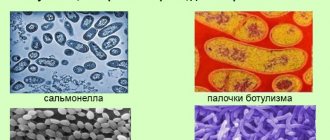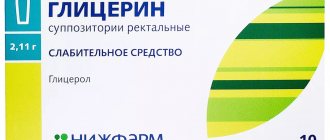Indications for use and characteristics of the drug chloramphenicol
First of all, Levomycetin is an antibiotic of synthetic origin. It is aimed at effectively destroying gram-positive cocci and bacteria that provoke gastrointestinal disorders. More specifically, we can say that Levomycetin is aimed at destroying:
- gonococci and meningococci;
- proteas and serrations;
- Leptospira;
- shigella;
- salmonella;
- Klebsiella;
- Escherichia coli and hemophilus influenzae.
This drug in itself is good, but requires proper use. Not every case of poisoning should be accompanied by the use of Levomycetin. In some cases, taking this drug can even be dangerous.
What diseases are treated with Levomycetin
The active ingredient of Levomycetin is chloramphenicol. It is a natural broad-spectrum antimicrobial substance belonging to the amphenicol group. Slows down the production of proteins in bacterial cells, thereby inhibiting bacterial growth. Due to severe side effects and the rapid emergence of bacterial resistance to this antibiotic, its use in the treatment of infections is limited.
Levomycetin is used only for severe infections. It is indicated if less toxic antibacterial agents do not have an effect or there is no possibility of their use.
Chloramphenicol is prescribed in the following cases:
- respiratory tract diseases caused by bacterial lesions (lung abscess, pneumonia);
- infectious diseases of the gastrointestinal tract (shigelosis, salmonellosis, typhoid fever, inflammation of the peritoneum, paratyphoid fever);
- other serious diseases - inflammation of the meninges, chlamydia, tularemia, inflammation of the eyes caused by chlamydia.
Levomycetin is effective against many types of microorganisms. It inhibits and reduces the number of bacteria well; in high doses it leads to the death of some strains of bacteria.
The following pathogens are sensitive to the antibiotic:
- streptococci (including pneumococcus),
- salmonella (including typhoid bacillus),
- coli,
- Shigella (including dysentery),
- brucella,
- proteas,
- Neisseria,
- plague stick,
- corynebacteria (the causative agent of diphtheria),
- hemophilus influenzae,
- Neisseria,
- treponema,
- rickettsia,
- chlamydia,
- Leptospira.
The drug is ineffective against:
- mycobacteria (including tuberculosis),
- staphylococci,
- protozoa,
- Pseudomonas aeruginosa,
- mushrooms
Indications for use of Levomycetin
The following factors can be considered to accompany food poisoning:
- After taking generally accepted measures in case of food poisoning, the patient's condition continues to deteriorate. And also if vomiting and diarrhea do not stop.
- Basic therapy did not lower body temperature. The high temperature continues for several days.
- Feces contain impurities of pus or blood.
- As a result of laboratory analysis (culture), bacteria or bacilli sensitive to Levomycetin were found.
- If other milder antibiotics were powerless.
What to do in case of poisoning with fever?
To bring down the temperature in case of poisoning, a number of measures can be taken. The patient should be put to bed, but there is no need to wrap him in a warm blanket. Give him more liquid, juices, fruit drinks, rich in vitamins. Rubbing with a vinegar solution or vodka diluted with water helps a lot. You can apply a cold compress to the patient's forehead. The victim should adhere to a diet.
In case of poisoning with fever, you should consult your doctor about home treatment. He will recommend what to drink if you are poisoned with a fever. Traditional medicine offers an effective decoction of linden tea.
To prepare it, take the dried leaves of the plant, add boiled water and leave to brew for about five minutes. Then mix the strained liquid halfway with cool water. The decoction is ready for use. You should drink it often and can even give it to a child from 4 years old.
Tea can be prepared using this method from willow twigs. It will not only bring a hyperthermal effect, but also normalize the microflora.
The main causes of fever during poisoning
An increase in body temperature during poisoning is caused by pyrogens. Their appearance is influenced by the activity of immune cells or the vital activity of viral agents, which can cause a malfunction in the brain thermoregulation center of the central nervous system.
If the fever reaches 38.6°, it is necessary to urgently begin to apply any therapeutic measures. High thermometer readings can threaten the patient's life. This especially applies to older people and children.
The appearance of hyperthermia can be influenced by various factors:
- exposure to harmful microbes while eating along with dirty fruits and vegetables;
- they contain a huge amount of pesticides and nitrates;
- infected meat;
- the required heat treatment was not maintained during cooking;
- improper storage of food in the refrigerator;
- consumption of poisonous mushrooms;
- taking edible mushrooms with increased amounts of toxins from environmentally polluted areas;
- ingestion of staphylococci and salmonella with milk;
- long-term storage of preserved food at home.
Illiterate use of Levomycetin
Possible negative consequences of self-medication. A medicine such as Levomycetin has a fairly aggressive effect on certain types of bacteria and the entire body as a whole. Therefore, violation of the dose and indications for use can lead to some undesirable consequences.
- Allergic reactions. Allergies can range from a mild rash to severe swelling.
- Violation of blood composition, which can even lead to anemia in severe cases.
- Aggressive effect on the intestinal wall.
- Urine becomes darker.
- Hearing and vision may be temporarily impaired, and migraines may occur.
- General deterioration of health and drowsiness.
- Nervous system disorders: depression, lack of coordination, hallucinations.
It is important to understand that only a doctor can make any prescriptions to eliminate symptoms and treat poisoning. Consultation, examination and test results will allow you to establish an accurate diagnosis. Then the doctor will prescribe the necessary medications. It will also determine the optimal dosage and duration of their use.
Levomycetin overdose
Sometimes people strive to quickly eliminate the effects of the toxin and violate the doctor’s recommendations. An arbitrary increase in the daily norm leads to an overdose of the substance. In this case, symptoms are observed:
- The skin becomes white;
- There is soreness in the larynx;
- Body temperature rises to 38-40 degrees;
- Internal bleeding may be present;
- Weakness in the muscles leads to the rapid onset of fatigue.
Exceeding the dosage can become severe - intense diarrhea, repeated vomiting, flatulence, disturbances in the functioning of the respiratory system and heart.
About the drug
Levomycetin actitab is a drug whose action is aimed at suppressing pathogens. Used for various poisonings.
- Infectious bowel diseases,
- Diseases caused by infections
- Wound surfaces with purulent contents,
- Long-term intestinal upset accompanied by diarrhea.
The main active ingredient, chloramphenicol, prevents the formation of proteins in the cells of microorganisms. As a result, harmful bacteria die. The medication is quickly absorbed into the blood, the highest concentration is observed after a few hours. Bacteria become accustomed to the drug slowly.
Levomycetin can be purchased in pharmacies in the form of tablets or powder. One tablet contains 0.25 or 0.5 mg of active substance. They are easy to take and take the medicine with plenty of water. The powder is used to prepare injections; such a product has better absorption and acts faster.
Effect of the drug
The drug Levomycetin is a broad-spectrum antibiotic that is indicated for use in the presence of certain microorganisms in the body.
The action of the tablets is aimed at disrupting the process of protein synthesis in microbial cells. Levomycetin is ineffective against acid-fast bacteria and anaerobes, as well as some representatives of staphylococcus.
Levomycetin contains chloramphenicol. Tablets for diarrhea consist of colorless crystals with a bitter taste. Since 1947, scientists have found a method for producing the drug synthetically.
The slow development of resistance of pathogenic bacteria to the main substance of the diarrhea medication in question has been proven. Therefore, Levomycetin can be used by children and adults.
The tablets are also indicated for use in dysentery, enterocolitis, salmonellosis and other pathologies that occur with diarrhea.
Most strains of bacteria resistant to penicillin and tetracycline antibiotics are quickly destroyed by Levomycetin.
The drug in question for diarrhea in adults and children is available in the form of yellow and white tablets. Each anti-diarrhea tablet contains up to ¼ or ½ gram of the main substance.
It is recommended to drink the drug if you have read the instructions. In addition to the main active ingredient, Levomycetin for diarrhea contains the following auxiliary components:
- Potato starch strengthens diarrhea tablets - this substance is presented in the form of a powder of uniform consistency. This semi-finished product is extracted from potato tubers;
- povidone is an enterosorbent with detoxification effects. Easily binds toxins that are in the patient’s body;
- calcium stearate with synthetic fatty acids.
In what cases is it necessary to take chloramphenicol?
Is it possible to use Levomycetin in case of poisoning? In what situation will the drug have the necessary effect? Experts prescribe medications for various diseases.
- Frequent diarrhea that cannot be stopped
- Lack of results when providing first aid
- Continuous vomiting
- Increased body temperature, inability to reduce it with the help of special medications
- Presence of blood in vomit
- The presence of purulent and bloody inclusions in feces.
It is permissible to use Levomycetin only as prescribed by a specialist in compliance with the instructions; independent use can lead to adverse consequences.
Overdose
Sometimes, in an effort to get rid of the disease as quickly as possible, people try to take more medications. This leads to overdose, which in turn leads to serious health consequences . Signs of overdose include:
- Paleness of the skin.
- Pain in the larynx area.
- Increased body temperature.
- Bleeding.
- Increased fatigue, weakness in the limbs.
If the overdose is severe, a “gray collapse” occurs. It is accompanied by diarrhea, vomiting, severe bloating, breathing problems, and problems with the heart . These symptoms are especially dangerous in children.
If signs of overdose are detected, you must immediately stop taking the drug. You will need gastric lavage and the usual first aid measures that are used for poisoning. After this, you should consult your doctor about further therapy.
Levomycetin for various types of poisoning
The use of the medicine is permitted in adults and children over the age of three years. The tablet is swallowed and washed down with water. The use of Levomycetin is allowed for various types of poisoning.
If you have food poisoning
Food poisoning is one of the most common cases of intoxication. A person experiences disruption of the functionality of many organs and systems. To cleanse the toxins, gastric lavage is performed.
After cleansing, the patient is given sorbents to take. The absence of vomiting during food poisoning indicates the possible spread of the toxin in the intestines. A Levomycetin tablet will help get rid of unpleasant sensations.
How to take the medicine? Treatment with the drug is continued for two weeks. In case of food poisoning, take chloramphenicol thirty minutes before meals.
The dosage for adults is up to two grams of the substance per day, for children – 15 mg per kilogram of weight. For children who are poisoned, it is recommended to administer the substance intramuscularly; in this case, it will act faster.
Alcohol and drug poisoning
In such a situation, the use of Levomycetin is useless and will not give the desired result. Taking pills with alcohol can lead to unpleasant symptoms. The patient may experience heart rhythm disturbances, headaches, disruptions in the respiratory process, and vomiting. In the absence of help, death cannot be ruled out.
The simultaneous use of alcoholic beverages and antibiotics leads to increased negative symptoms and the accumulation of toxic substances in the body. Treatment of poisoning takes a long time and requires constant monitoring by doctors.
Intoxication with acids and gases
Levomycetin is a drug that helps with infections. Therefore, use in cases of poisoning with acids and gaseous substances will not help. The medicine has no effect, in some cases it can lead to a worsening of the condition. It is recommended to avoid use in case of these poisonings.
If poisoning in children
Levomycetin can be used in children when they reach three years of age. It is recommended to remember that this is an antibiotic. Therefore, self-administration of antibacterial medication to a child in case of poisoning is not allowed.
When prescribing Levomycetin to children, it is necessary to carefully observe the dosage to avoid drug intoxication.
How to use the drug correctly
Levomycetin in case of poisoning can be taken by adults and children over the age of three years . In this case, the course of therapy should be at least a week. The tablet is best taken half an hour before meals, washed down with plenty of clean water. Swallow it whole without breaking it or chewing it. Remember that you should not take medications with milk, juice or other drinks. If the victim experiences bouts of vomiting, it is recommended to take the medicine an hour after eating.
The maximum permissible dosage of the drug for an adult is 2 grams. It must be divided into three doses at equal intervals. Children over eight years old should not be given more than 0.4 grams of chloramphenicol. Children should not use more than 15 mg per kilogram of body weight.
Intramuscular administration of the drug is recommended for children. To do this, the required amount of powder is dissolved in water according to the instructions included with the medication. Injections should be given at regular intervals. The duration of such treatment can only be determined by the attending physician.
If after several days of using the drug the victim’s condition does not improve at all, you should immediately consult a doctor. Get a medical examination to help determine the exact cause of the poisoning.
The drug has a number of contraindications, so before using it you should consult a specialist. It cannot be taken simultaneously with diphenin, cytostatics, barbiturates, sulfonamides and some other substances . This must be taken into account before starting treatment.
The product released in tablets can be stored for no more than three years. The powder for preparing the injection is stored slightly longer, up to four years. Before using the product, check its expiration date. Remember that using expired medications is dangerous to your health.
Contraindications and side effects
In case of poisoning, the drug must be used according to the instructions for use. There are contraindications in which the use of such a drug is not permissible and can lead to serious and irreversible complications.
- Disruption of the hematopoiesis process,
- Skin diseases,
- Intolerance to components,
- Pregnancy and breastfeeding,
- Acute respiratory diseases,
- Mild intestinal infections
- Prevention goals.
In the absence of control during use, the development of unpleasant and side symptoms and an overdose of Levomycetin cannot be ruled out.
- Allergic reactions,
- Anemia,
- Decreased leukocyte levels
- Poor health, increased fatigue,
- Severe headaches
- Violation of visual and auditory functions,
- Reduced platelet count,
- Disturbance of intestinal microflora.
If such signs appear, you need to stop treatment and consult a medical specialist.
Contraindications
In some cases, the use of such an antibacterial drug can lead to negative health consequences. Among the main contraindications are:
- individual intolerance to the drug . Some people experience a severe allergic reaction;
- diabetes;
- age up to three years;
- pregnancy and lactation;
- serious skin conditions such as eczema, fungus or psoriasis;
- severe renal or liver failure;
- circulatory disorders;
- oncological diseases.
You should not use an antibiotic even if the poisoning is caused by toxins or viruses . In this case, the drug will be ineffective, and valuable time will be lost.
Some people have resistance to chloramphenicol. This means that pathogens simply do not respond to the drug. Monitoring the victim’s well-being will help identify this. If two or three days after starting the course no improvements are observed, you should consult your doctor about changing the drug.
The use of chloramphenicol for diarrhea
If diarrhea is caused by an infection in the body, then using Levomycetin will help cope with it. To accurately determine the cause of an intestinal disorder, you need to visit a doctor. If this is not possible, then it is permissible to take one tablet and see how the body reacts. If there is no positive result after four hours, then further treatment with Levomycetin is not effective.
If diarrhea is treated with medication, it should not be stopped abruptly. Reception is carried out over several days.
Levomycetin in case of poisoning is a good and effective antibacterial agent. It is permissible to take it after consultation with a specialist; it is not recommended to use such a medicine on your own.
Treatment of diarrhea with Levomycetin
Food poisoning is always accompanied by bouts of diarrhea. To eliminate the symptom, people use an antibiotic. The substance only helps in the presence of a bacterial infection. In other cases, the drug will not help.
It is not recommended to use the medicine on your own. Only a doctor can determine the cause of intoxication. Arbitrary use can cause irreparable harm to health. In some situations, the death of the patient is possible.
You need to contact the clinic for advice. Before being examined by a specialist, you are allowed to take 1 tablet and carefully monitor your own condition. The drug should take effect within 4 hours. If there is no improvement, stop taking it.
You cannot stop taking the pills on your own until the end of the course of therapy. To completely destroy bacteria, you must complete the entire course of treatment. When used correctly, patients have only positive reviews about the drug.
source
Video: instructions for use of chloramphenicol
Digestive upset in the form of diarrhea and vomiting is among the most common symptoms of food poisoning. Comprehensive measures will help you overcome this unpleasant condition - drinking plenty of fluids, gastric lavage, taking sorbents and following a diet.
To speed up the healing process, patients often take medications themselves. But not all medications are suitable for food poisoning. One of the popular “prescriptions” for self-medication of poisoning is Levomycetin. Therefore, it is important to know when it is beneficial, and in what cases its use is not only not justified, but also life-threatening. Let's look at these questions.
Composition and action of chloramphenicol
The drug has antimicrobial properties, which has allowed it to be widely used in the fight against poisoning caused by infections. It exhibits particular activity against Protea, Salmonella, and Escherichia coli Leptospira. Not active enough against Pseudomonas aeruginosa and acid-fast bacteria.
Indications for use of the drug:
- diarrhea and vomiting with the presence of purulent contents and blood,
- profuse vomiting with frequent repetitions,
- persistent high body temperature, unresponsive to antipyretics,
- weakness, deterioration of physical condition, apathetic mood,
- no improvement after cleansing the stomach and taking adsorbent drugs.
Before taking Levomycetin, you need to clearly consider your actions; sometimes it is enough to rinse your stomach to eliminate the consequences of intoxication.
The drug is prescribed after laboratory tests, despite the pronounced clinical picture. Unnecessary use is dangerous due to the development of resistance to antibiotics by microorganisms, and chloramphenicol will not help. In this case, the doctor will be forced to look for a remedy that can suppress the activity of bacteria.
Properties of Levomycetin and indications for its use
Levomycetin is a synthetic antibiotic with an effective effect against gram-positive cocci (gonococci and meningococci), as well as bacteria that cause digestive tract disorders (Escherichia coli, Proteus and Serration, Shigella, Salmonella, Leptospira, Klebsiella, Haemophilus influenzae).
Indications for the use of Levomycetin for poisoning are:
- serious condition of the patient with increasing weakness, repeated vomiting and diarrhea (more than 10 times), which do not stop after generally accepted measures;
- the presence of blood and/or pus in the stool;
- maintaining an elevated temperature for more than a day, despite basic therapy;
- laboratory examination of stool (culture) to determine the pathogen sensitive to Levomycetin;
- in special cases when antibiotics other than Levomycetin do not act on the pathogen.
It should be emphasized that only a doctor prescribes antibiotics for treatment, especially in cases of poisoning! After consultation, examination and laboratory test results, he establishes a diagnosis and recommends appropriate treatment, indicating the dose of the drug, frequency of administration per day and duration of therapy.
For your information, here are general recommendations according to the instructions for the use of Levomycetin in case of poisoning:
- the drug is taken 30 minutes before eating or, if the patient experiences nausea, 1 hour after eating;
- It is recommended to swallow the tablet whole, do not chew or crush it, and wash it down with plenty of water (sweet water is allowed);
- used for the treatment of adults, 0.5 grams 3-4 times a day, appointments should be organized at regular intervals;
- courses of use according to doctor’s prescription – on average 5–7 days;
- Levomycetin is prescribed to children after 3 years of age for poisoning and the dose of the drug is calculated per kilogram of the child’s body weight.
Features of use by children
Treatment with Levomycetin in childhood is carried out strictly as prescribed by a doctor when infectious and inflammatory diseases are detected. Antibiotics are prohibited for newborns due to the risk of overdose. The drug should not be given in the form of tablets or capsules if the child is under six months of age. This is dangerous due to the accumulation of the active substance in the liver due to the inability of this organ to neutralize and remove it from the body. In 40% of cases, an overdose of chloramphenicol in childhood results in death.
Treatment with Levomycetin in young children can cause a severe drop in blood pressure. “Gray syndrome” often develops, when the skin acquires a bluish-gray tint. The active component has a toxic effect on the myocardium, which can manifest itself in the following symptoms:
- irregular, uneven breathing;
- disruption of the heart muscle;
- lack of reactions.
Body temperature may rise, abdominal bloating, and nausea may occur.
For premature and small children, therapy with Levomycetin is prescribed only for severe poisoning that is not amenable to milder antibiotics.
Starting from 6 months, the doctor prescribes the drug, but as a last resort.
Antibacterial drugs can be more harmful than infection. It is dangerous to prescribe them to children without consulting a doctor.
Negative consequences of uncontrolled use of Levomycetin
Levomycetin is a bacteriostatic drug; it has a fairly strong effect on certain types of bacteria. In addition, it is characterized by an equally aggressive effect on the human body.
With uncontrolled treatment with Levomycetin, the side effects will be as follows.
- Allergic reactions - from hives (itching and rash) to serious health problems such as swelling of the throat, lips and tongue, and face.
- The effect on hematopoietic function leads to a decrease in the number of cellular elements in the blood. A drop in the concentration of leukocytes contributes to a decrease in defenses and the occurrence of colds. A low platelet count causes a predisposition to the development of bleeding - from the nose, from the gums, and from the intestines. Impaired formation of red blood cells is the basis of anemia.
- Changes in the amount of glucose in the blood; the drug should be used with caution in patients with diabetes.
- Irritation of the intestinal mucosa as pseudomembranous colitis, which is characterized by the appearance of watery diarrhea with blood.
- Urine may become dark in color.
- Headaches, visual and hearing impairment.
- Disorders of the nervous system are manifested by depressive states, psychomotor disorders, and hallucinations are possible.
- Symptoms of general malaise.
Children under 3 years of age are generally not recommended to take Levomycetin for poisoning. Taking the drug can cause the development of “gray child syndrome”, which is manifested by weakness and drowsiness, repeated vomiting and refusal to eat, the child’s body temperature is below normal, diarrhea with greenish feces is noted, pale skin acquires a gray or sometimes blue tint. If in this condition you do not immediately stop taking the drug and call an ambulance, the child may die.
Considering the above adverse reactions, the main contraindications to taking the drug should be indicated.
- It is not advisable to use Levomycetin for food poisoning caused by toxins. The drug does not affect them and does not promote their elimination.
- An approximate situation occurs with viral intestinal diseases that are insensitive to the drug.
- In patients with resistance (insensitivity) to Levomycetin due to uncontrolled use as self-medication, without observing the dosage of the drug and the duration of treatment. If the medicine is used for 1 or 2 days, the patient not only does not get rid of pathogens, but contributes to the development of their resistance to antibiotics.
- It is not recommended for use in the treatment of pregnant women, nursing mothers and children under 3 years of age.
- Prescribing the medicine to patients with diabetes mellitus, severe liver and kidney damage is not recommended.
- Patients with impaired hematopoietic function or cancer patients who are taking chemotherapy or cytostatics should not use the drug.
Thus, Levomycetin, due to its broad antimicrobial effect, has good therapeutic effects for a certain list of pathogens. But its use requires preliminary laboratory confirmation, and you must adhere to the doctor’s recommendations on how to take Levomycetin in case of poisoning; you must also take into account that when taking it, there is a high risk of adverse reactions and it is important to pay attention to contraindications.
Indications and contraindications
The drug helps with various diseases, so before taking it, study the instructions. Levomycetin is prescribed to children and adults for the following diseases:
- Inflammation and infection caused by microbes and bacteria that are sensitive to the drug in question.
- Long-term, chronic disease of the biliary tract.
- Chlamydia.
- Typhus.
- Sepsis.
The medication can be taken for other diseases if other drugs are ineffective. To become familiar with the contraindications to taking the medication, read the instructions:
- high sensitivity to the main component of the drug;
- Mon;
- skin pathologies;
- acute form of porphyria;
- pregnancy and lactation period.
Levomycetin should not be taken for diarrhea in children under 3 years of age. Against the background of an overdose of the drug, the patient may complain of depression, intoxication, migraine, dermatitis.
The risk of developing the above-described phenomena will increase if the patient takes Levomycetin for diarrhea in combination with sulfonamides and cytostatics. The latter drugs inhibit the process of hematopoiesis.
Against the background of abuse of the drug in question, a toxic effect on the heart muscles develops. The patient's skin turns green and body temperature drops to 35 degrees.
At the same time, it becomes difficult for him to breathe. He doesn't react to reality. It is forbidden to take Levomycetin simultaneously with penicillins and cephalosporins, since the effect of all of these medications is weakened.
If you have diarrhea, you should not take Levomycetin and drink alcoholic beverages at the same time. Otherwise, the above complications will appear.
This drug easily eliminates diarrhea caused by intestinal infection if taken from the first day of diarrhea. In mild cases, diarrhea will disappear after 3 hours, but in severe cases, therapy lasts longer than two days.
Why does the temperature rise during poisoning?
In conditions of disturbance of the intestinal microflora, the development of coccal bacteria that enters with spoiled food is actively underway. As a result, classic symptoms develop: the patient begins to feel sick, vomiting, and diarrhea appear. If you do not cleanse your stomach and intestines in time, bacteria will continue to multiply.
To get rid of them and create an unfavorable environment for these pathogenic microbes, the mercury column of the thermometer begins to soar. Thanks to hyperthermia, the process of metabolism and synthesis of protein molecules is accelerated. These manipulations are necessary to remove harmful agents and speedy recovery.
In what cases is temperature dangerous in case of poisoning?
If, when feeling unwell, the thermometer shows over 38.5 degrees and lasts for more than a day, there is a need for medical care. This can be especially dangerous for those who suffer from serious chronic diseases.
With hyperthermia, the functions of almost all human systems are disrupted:
- cardiac: vascular spasm increases blood pressure, headache;
- respiratory: the patient begins to breathe frequently, but shallowly;
- digestive: loss of appetite, dry mouth, development of spastic and atonic constipation;
- increased diuresis appears, which leads to decreased urine formation and accumulation of sodium, increased chlorine content;
- hypovitaminosis develops as vitamins and provitamins are lost;
- the nervous system suffers: the patient complains of headache, drowsiness, fatigue, aches.
For any manifestation of food poisoning, you should call emergency services.
